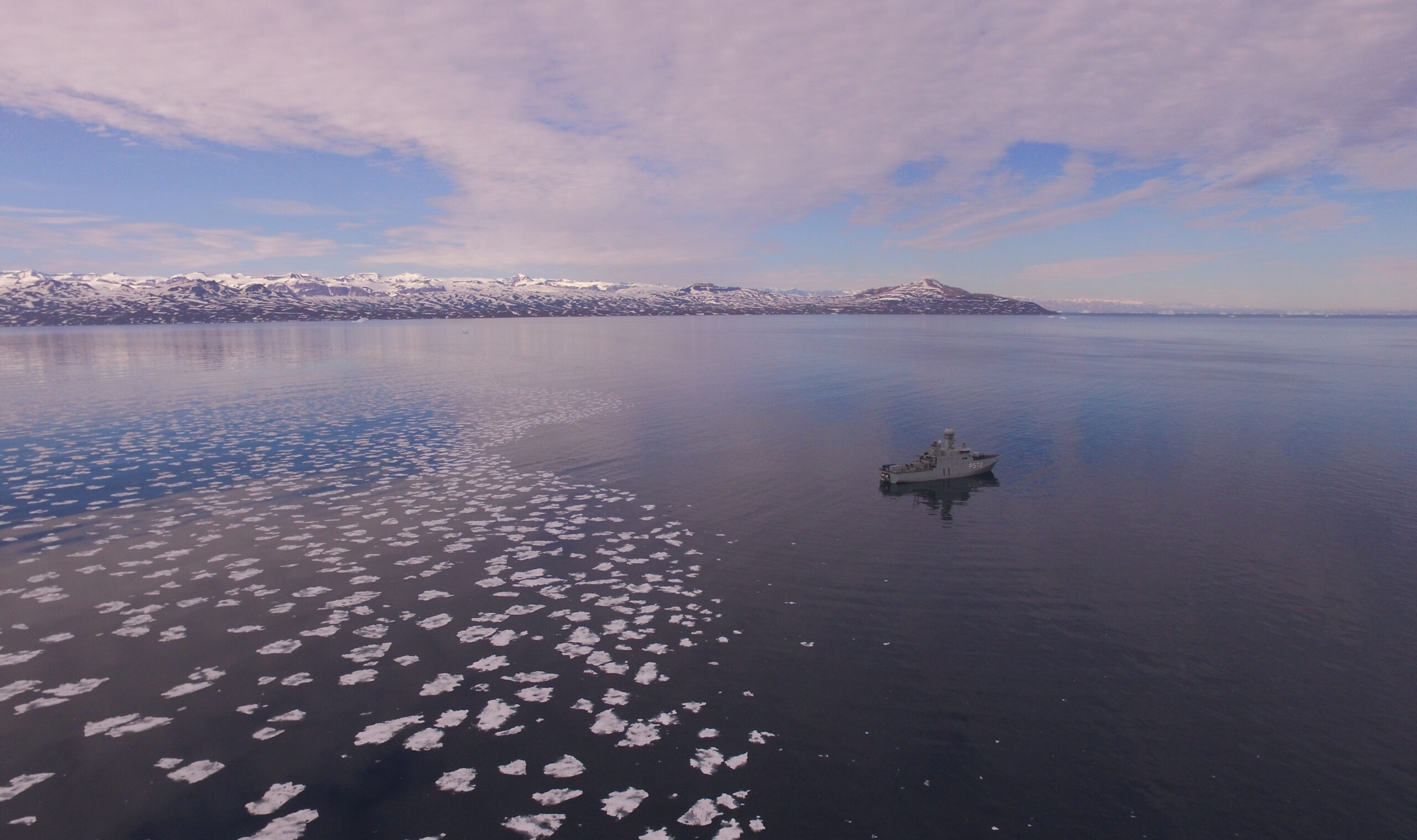NATO’s Arctic Strategy Is an Overreaction
Militarizing the polar region does not serve American interests.

In July, the U.S. Department of Defense released its first Arctic strategy guide since 2019. Washington’s concerns peaked when American and Canadian jets intercepted two Russian Tupolev TU-95 strategic bombers and two Chinese H-6 bombers operating in international airspace around 200 miles off the coast of Alaska. While the United States must ensure the security of its territory, including Alaska, overreacting and developing a militaristic hyperfocus on the Arctic, where U.S. interests are limited, would be a blunder.
The Arctic strategy document highlights the threat of recent Sino-Russian collaboration in the Arctic, citing PLAN and Russian Navy ships operating together in international waters off the coast of Alaska in 2022 and 2023. Russia, which controls the largest swath of Arctic territory of any Arctic nation, has expanded and modernized its Arctic military infrastructure. The region is of great importance to Moscow, as Russia aims to defend its second-strike, sea-based nuclear deterrent capability operating out of the Kola Peninsula to defend the homeland and protect its regional economic endeavors, including oil and gas megaprojects like the Yamal LNG and Vostok Oil ventures.
Meanwhile, China’s activities in the Arctic have been mainly economic in nature. In the 21st century, China has invested over $90 billion in Arctic energy and minerals sector projects. Beijing’s economic activity aligns with its 2018 Arctic Strategy, which mentions Beijing’s aim to gain more influence in its claim as an Arctic stakeholder. As the U.S. strategy guide mentions, the PRC seeks to promote the Arctic region as a “global commons,” a statement that Washington perceives as an opportunity for China to shift governance of the region in its favor.
Neither the modernization of Soviet-era military bases nor PRC attempts to construct a Polar Silk Road constitutes enough of a threat to warrant making the Arctic the next battleground of great power competition. Yet the NATO alliance, with Finland and Sweden recently becoming full-fledged members, is determined to confront the perceived threat in the Arctic region.
Although NATO has historically lacked an official position on the Arctic, following the start of the Russo–Ukrainian war in 2022, the Arctic region has become a larger security focus for the alliance. With Finland and Sweden’s ascension to NATO, the alliance’s Arctic presence increased significantly and has been accompanied by large-scale military exercises, such as Nordic Response 2024, which involved 13 NATO countries and 20,000 troops. Moreover, NATO’s new Arctic posture includes enhancing surveillance and reconnaissance capabilities, as well as improving interoperability among NATO member states.
Despite its increased operations in the region over the past few years, Russia’s ability to mount an Arctic offensive is negligible as it remains entrenched in the quagmire that is the Russo-Ukrainian War. Moscow’s invasion of Ukraine has been mired with various failures and shortcomings, including poor planning and running out of necessary supplies. Shortages have become enough of an issue for Moscow to resort to increased cooperation with pariah states, such as North Korea, to attain necessary equipment.
Regarding China, Beijing’s interest in the Arctic beyond economic endeavors is minimal. China’s main preoccupation has consistently been the Taiwan Strait, as Beijing has used various coercive tactics short of armed conflict aimed at wearing down Taiwan to capitulate to its aim of unification with the island. Military activity in the Arctic would rank extremely lowly in importance regarding Beijing’s military initiatives.
Washington and the NATO alliance should acknowledge that engaging in a military confrontation in the Arctic would be extremely costly and difficult. Even with the addition of Finland and Sweden to the NATO alliance, Russia will remain the most influential player in the Arctic. Rather than adding fuel to the fire of Western relations with Russia, the West should emphasize keeping channels of communication open with Russia to avoid and manage crises, as well as mitigate the risks of conflict through an accident or miscalculation.
Subscribe Today
Get daily emails in your inbox
The war in Ukraine has undoubtedly made cooperation and diplomacy in the Arctic more difficult. Nevertheless, the U.S. can expect Russia to remain open to peaceful discussions. Even during the height of the Cold War, Russia—then the Soviet Union—cooperated with the West on Arctic issues, including initiatives like the 1973 Agreement on the Conservation of Polar Bears and the 1987 “Murmansk Initiative” toward regional cooperation. Despite current high tensions, given the potential for mutual devastation, Russia and NATO share an interest in maintaining peace in the Arctic region.
The Arctic Council has been an important working group for Arctic diplomacy. In the past, the Council has facilitated the improvement of marine safety in the Bering Strait, where the U.S. and Russia share a maritime border. To reduce Russia’s potential desire to cooperate militarily with Beijing in the Arctic, the Arctic Council should not exclude Moscow and should encourage an atmosphere of openness. Such exclusion is a counterproductive measure that only leaves room for misunderstandings and could lead to even greater tensions between the West and Moscow.
An end to the Russo–Ukrainian war seems as distant as ever, with no indication that legitimate moves toward diplomacy will occur. Nevertheless, the United States and NATO should seek cooperation with their adversaries when possible and avoid opening a new avenue of escalation.